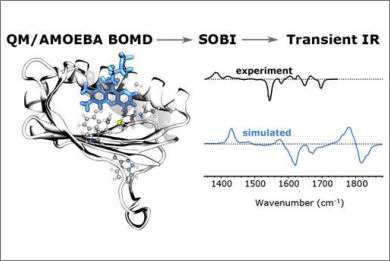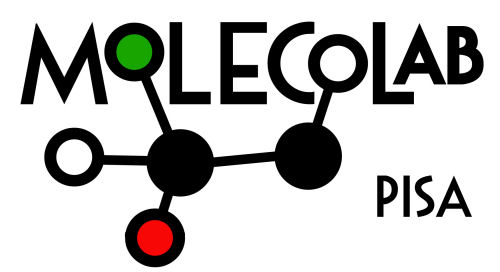
Ultrafast transient infrared (TRIR) spectroscopy is widely used to measure the excitation-induced structural changes of protein-bound chromophores. Here, we design a novel and general strategy to compute TRIR spectra of photoreceptors by combining μs-long MM molecular dynamics with ps-long QM/AMOEBA Born–Oppenheimer molecular dynamics (BOMD) trajectories for both ground and excited electronic states. As a proof of concept, the strategy is here applied to AppA, a blue-light-utilizing flavin (BLUF) protein, found in bacteria. We first analyzed the short-time evolution of the embedded flavin upon excitation revealing that its dynamic Stokes shift is ultrafast and mainly driven by the internal reorganization of the chromophore. A different normal-mode representation was needed to describe ground- and excited-state IR spectra. In this way, we could assign all of the bands observed in the measured transient spectrum. In particular, we could characterize the flavin isoalloxazine-ring region of the spectrum, for which a full and clear description was missing.
Macaluso, V.; Hashem, S.; Nottoli, M.; Lipparini, F.; Cupellini, L. & Mennucci, B.
J. Phys. Chem. B 125, 10282-10292 (2021) https://doi.org/10.1021/acs.jpcb.1c05753

